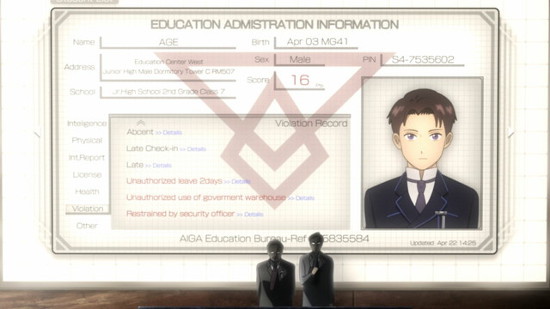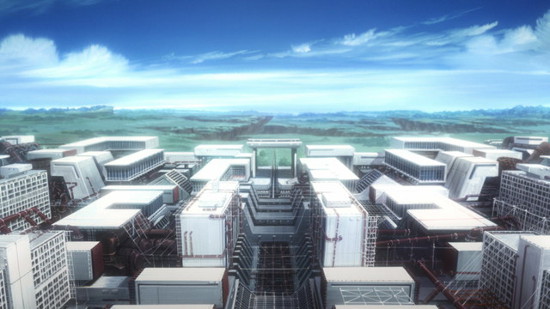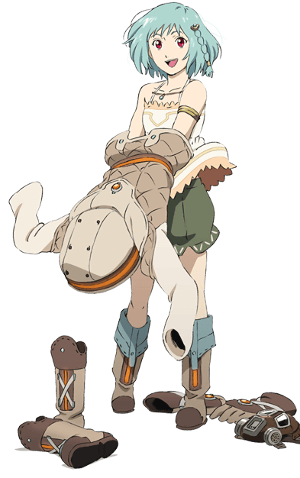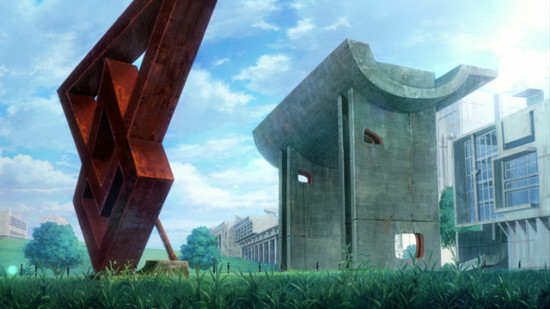
Rewatching Ghibli’s Porco Rosso the other day, I was reminded that, before live-
action films starting relying increasingly on computer effects (what percentage of,
say, Gravity is actually filmed footage?), animation used to be the exclusive home of
a kind of breathtaking movement impossible in live action. The twists, turns and rolls
of the airplanes in that film are simply magical, especially when you really step back
and remember all that sense of movement comes simply from (very talented) men and
women making drawings on paper.
Patema Inverted is no Ghibli masterpiece, but at its best moments, it’s a reminder of
that same power of animation.

Patema is the second full-length film from writer/director Yasuhiro Yoshiura, the creator
of Time of Eve. Like Time of Eve, Patema started as a original net animation before
being made into a full-length film.
The film begins with archival footage of a scientific experiment gone awry. Scientists
attempting to create anti-gravity technology instead reverse the gravity of the entire
planet, sending entire buildings flying (or falling, technically) into the atmosphere.

Cut to many years later, when two distinct civilizations have emerged – those whose
bodies maintain their original gravity (that is, they can stand firmly on the ground), and
“Inverts,” those who have been flipped. They live underground in a complex maze of
tunnels that would appear upside-down to those on the surface.
The two civilizations avoid contact, thinking the worst about each other, but each
side also has its few dreamers who wonder what life is like on the other side. For the
Inverts, this is Patema, a young girl who, against the orders of the elders, explores the
underground caves farther every day until she “falls” through a passage and into the
world above ground. She’s saved from falling endlessly into space by a young above-
worlder named Age.
This is where the real power of the film lies. To Age, Patema appears upside-down, her
legs firmly planted on the ceiling. But for Patema, of course, the reverse is true, and the
camera continually switches perspectives, showing us what things look like from both
points of view. The first time it happens, it’s the kind of “wow” moment that reminds you
of the power of animation.
And these wow moments continue whenever the film springs into action. An early scene
involves Patema and Age running from the film’s villains. By taking Patema’s hands
in his, Age is able to use her reverse gravity to jump great distances, as if he were on
the moon. The feeling of flight is exhilaratingly animated, giving the viewer butterflies
as they imagine themselves hurtling through the air. Scenes later in the film introduce
more Inverts interacting with the world above ground, and its thanks to the skillful hand
of director Yoshiura that we’re constantly wowed but rarely overwhelmed or confused
whenever he flips the camera.
Patema is more of a mixed bag when the emphasis is on story, though.
Age’s home, the above ground world of “regular” gravity, is a kind of Orwellian society,
where Inverts are demonized, individuality is repressed, and dreamers are dealt
extreme punishment. It makes sense in the context of the film, but there’s little to
distinguish it from the standard evil, totalitarian society we’ve seen in dozens of other
films. The leader is especially one-dimensional, cackling evilly while holding his hands
over his mouth.

Patema’s society is equally cliched, with wizened old elders spouting wisdom and
keeping dangerous secrets to themselves. The relationship between Patema and Age is
a bright spot, though – they seem genuinely linked by a common philosophy, not simply
sticking together for the sake of the plot.
Patema is full of twists and turns (appropriate, considering the gravity premise), but
things don’t always quite click, plot-wise. But the joy of the film definitely comes from
those moments where the audience is invited to invert their minds and see things from
a new perspective. Its action sequences are a great reminder of the still-potent power of
animation.

